- Spirea: Growing Guide, Species, and Varieties for Your Garden
- Introduction
- Choosing a Species
- Planting and Care
- Popular Varieties
- Conclusion
- Choosing the Right Spirea Species
- Hardiness Zone
- Growth Habit
- Flower Color
- Foliage Color
- Maintenance Requirements
- Planting Spirea: Tips and Advice
- 1. Choose the right location:
- 2. Prepare the soil:
- 3. Dig the planting hole:
- 4. Backfill and water:
- 5. Mulch and maintain:
- Essential Care for Spirea Plants
- Pruning Spirea: Techniques and Timing
- Why prune spirea?
- Timing for pruning spirea
- Pruning techniques
- Conclusion
- Common Pests and Diseases of Spirea
- Pests
- Diseases
- Prevention and Treatment
- Landscaping Ideas with Spirea
- 1. Mixed Border
- 2. Hedge
- 3. Mass Planting
- 4. Foundation Planting
- 5. Erosion Control
- 6. Butterfly Garden
- Popular Spirea Varieties for Your Garden
- Questions and Answers:
- What is spirea?
- How do I grow spirea in my garden?
- What are some popular species of spirea?
- Can spirea be used as a hedge?
- What are some popular varieties of spirea?
- Are there any special care requirements for spirea?
- Can spirea be grown in containers?
- Videos: Summer Shade Garden Tour // Gardening with Creekside
Spirea, also known as meadowsweet, is a beautiful flowering shrub that is a popular choice for gardens. With its clusters of flowers and bright green foliage, spirea adds color and texture to any landscape. There are many species and varieties of spirea to choose from, each with its own unique characteristics.
Growing spirea is relatively easy, making it a great choice for both experienced gardeners and beginners. Spirea thrives in well-drained soil and full sun, although some varieties can tolerate partial shade. Regular watering is important, especially during dry spells, to keep the plant healthy and encourage new growth.
One of the most popular species of spirea is Spiraea japonica, also known as Japanese spirea. This variety is known for its vibrant pink flowers that bloom in the summer months. Another popular species is Spiraea prunifolia, or bridal wreath spirea, which produces stunning clusters of white flowers. Both of these species are easy to grow and can be a breathtaking addition to any garden.
Spiraea thunbergii, or Thunberg spirea, is another variety worth considering. With its delicate white flowers and arching branches, it has a graceful and elegant appearance. This species is also known for its lovely fall foliage, adding a burst of color to the garden as the seasons change.
Other notable spirea varieties include Spiraea vanhouttei, or Vanhoutte spirea, which has cascading branches covered in white flowers, and Spiraea x bumalda, or Anthony Waterer spirea, which has deep pink flowers that bloom throughout the summer months. These varieties, along with many others, offer a wide range of colors, textures, and growth habits to choose from, allowing gardeners to create a visually stunning landscape.
Whether you’re looking to add color to your garden or create a focal point with a flowering shrub, spirea is a versatile and beautiful choice. With its easy care requirements and wide variety of species and varieties, there is sure to be a spirea that suits your needs and preferences. So why not consider adding spirea to your garden and enjoy the beauty it brings?
Spirea: Growing Guide, Species, and Varieties for Your Garden
Introduction
Spirea is a popular shrub that adds beauty and color to gardens. With its clusters of delicate flowers, spirea is a favorite among gardeners. This growing guide will provide you with all the information you need to successfully grow spirea in your garden.
Choosing a Species

There are several species of spirea to choose from, each with its unique characteristics. Some common species include:
- Spiraea japonica: Known for its vibrant pink flowers, this species is a popular choice for many gardeners.
- Spiraea x vanhouttei: This species features cascading branches and white flowers that bloom in spring.
- Spiraea thunbergii: With its delicate white flowers and colorful foliage, this species adds a touch of elegance to any garden.
Planting and Care
Spirea is relatively easy to grow and care for. Here are a few tips to ensure your spirea thrives:
- Choose a sunny location: Spirea thrives in full sun, so make sure to plant it in an area that receives at least six hours of direct sunlight per day.
- Prepare the soil: Spirea prefers well-drained soil. Before planting, amend the soil with organic matter to improve drainage.
- Water regularly: Spirea requires regular watering, especially during dry spells. Keep the soil evenly moist, but avoid overwatering.
- Prune as needed: Prune your spirea in late winter or early spring to maintain its shape and promote healthy growth.
Popular Varieties
There are numerous varieties of spirea to choose from, each with its unique characteristics. Here are a few popular varieties:
| Variety | Characteristics |
|---|---|
| Goldflame | Features golden foliage that turns red in the fall |
| Snowmound | Produces abundant clusters of white flowers |
| Little Princess | A dwarf variety with pink flowers |
These are just a few examples, and there are many other varieties available to suit your taste and garden design.
Conclusion
Spirea is a versatile and beautiful shrub that can enhance the beauty of any garden. By choosing the right species, providing proper care, and selecting from the wide range of available varieties, you can create a stunning spirea display in your own garden.
Choosing the Right Spirea Species
When it comes to selecting a spirea species for your garden, there are a few important factors to consider. Each species has its own unique characteristics and growth habits, so it’s important to choose one that will thrive in your specific gardening conditions. Here are some factors to keep in mind when making your selection:
Hardiness Zone
The first thing to consider is the hardiness zone in which you live. Spirea species have different temperature tolerances, so it’s important to choose one that is suitable for your climate. Some species, like the Japanese spirea (Spiraea japonica), are more cold-hardy and can tolerate temperatures down to -20°F (-29°C), while others may only be suitable for warmer climates.
Growth Habit
Spirea species can have different growth habits, ranging from compact and mounded to tall and spreading. Consider the available space in your garden and choose a species that will fit in well with the overall design. For example, if you have a small garden, a compact variety like ‘Little Princess’ (Spiraea japonica ‘Little Princess’) may be a better choice.
Flower Color
One of the most appealing features of spirea species is their beautiful flowers. Different species produce flowers in a variety of colors, including white, pink, and red. Consider the color scheme of your garden and choose a species that will complement the other plants and flowers. For example, the bridal wreath spirea (Spiraea prunifolia) produces clusters of white flowers that can provide a striking contrast against dark green foliage.
Foliage Color
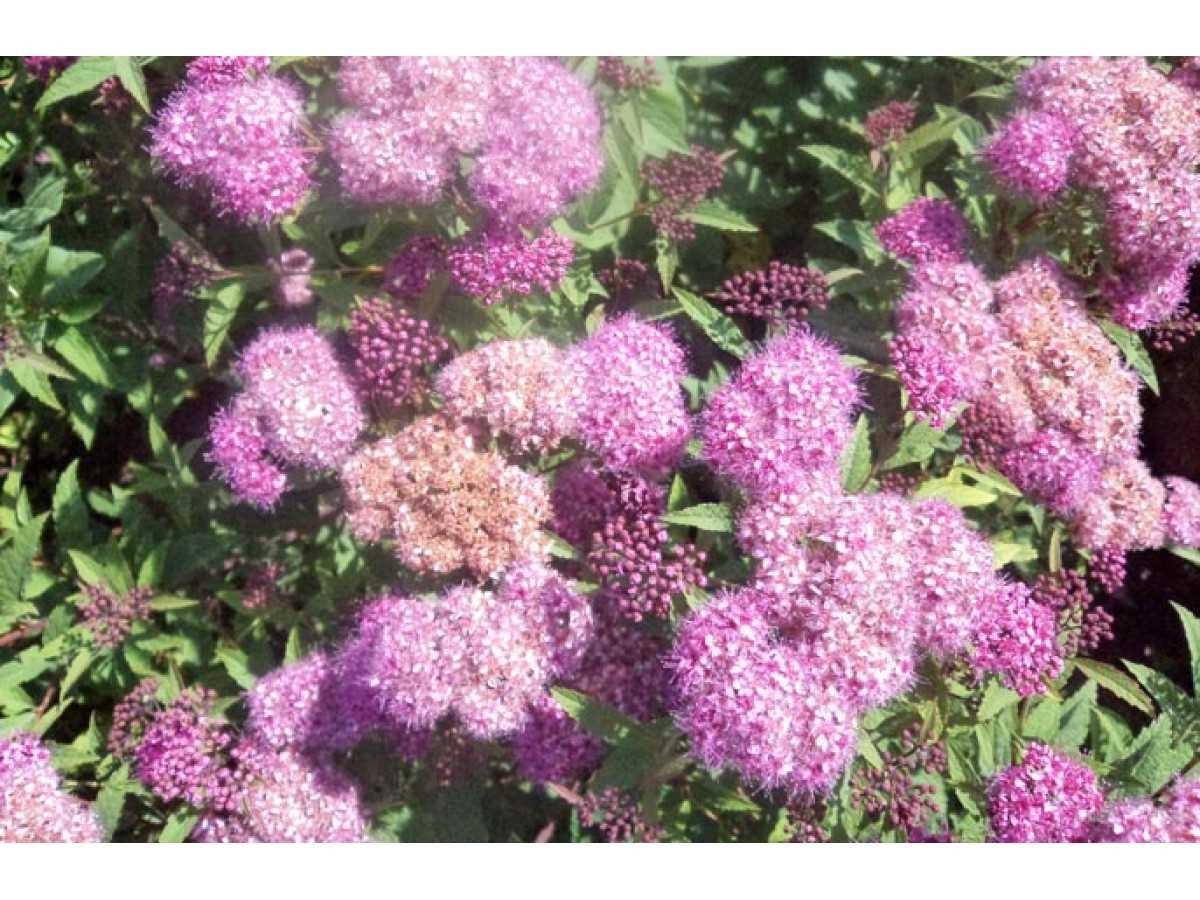
In addition to their flowers, spirea species also have unique foliage colors. Some species have bright green leaves, while others have foliage that changes color throughout the seasons. If you’re looking to add some visual interest to your garden, consider a species with colorful foliage, such as the goldflame spirea (Spiraea x bumalda ‘Goldflame’), which has vibrant golden-red leaves.
Maintenance Requirements
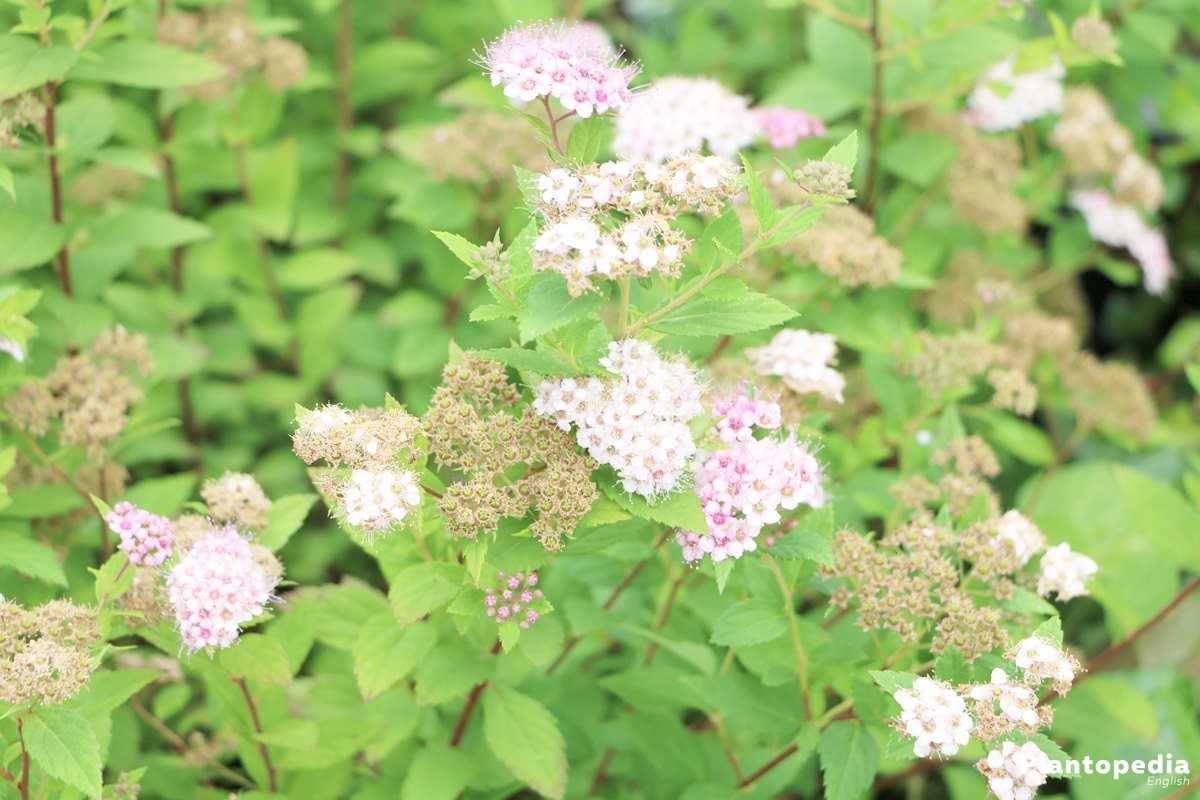
Finally, consider the maintenance requirements of the spirea species you are considering. Some species may require regular pruning to maintain their shape and promote healthy growth, while others may be more low-maintenance. If you’re not an experienced gardener or don’t have a lot of time to dedicate to plant care, choose a species that is known for its ease of maintenance, such as the vanhoutte spirea (Spiraea vanhouttei).
| Species | Hardiness Zone | Growth Habit | Flower Color | Foliage Color | Maintenance Requirements |
|---|---|---|---|---|---|
| Spiraea japonica | Zones 4-9 | Compact and mounded | White, pink, red | Bright green | Low maintenance |
| Spiraea prunifolia | Zones 4-8 | Tall and spreading | White | Dark green | Regular pruning |
| Spiraea x bumalda ‘Goldflame’ | Zones 3-8 | Compact and mounded | Pink | Golden-red | Low maintenance |
| Spiraea vanhouttei | Zones 3-8 | Tall and spreading | White | Bright green | Regular pruning |
By considering these factors and doing some research on the different spirea species available, you can choose the right one to enhance the beauty of your garden.
Planting Spirea: Tips and Advice
Planting spirea in your garden is a great way to add color and beauty to your landscape. Whether you choose a compact variety for a small space or a larger one as a focal point, spirea is a versatile and easy-to-grow plant. Follow these tips and advice to ensure successful spirea planting:
1. Choose the right location:
- Spirea thrives in full sun or partial shade, so choose a spot in your garden that receives at least 6 hours of direct sunlight per day.
- Ensure good drainage as spirea prefers well-drained soil. If your soil is clayey or heavy, amend it with compost to improve drainage.
2. Prepare the soil:
- Before planting, remove any weeds, rocks, or debris from the area. Loosen the soil with a garden fork or tiller to a depth of about 12 inches. This will help the spirea roots to establish easily.
- Add organic matter, such as compost or aged manure, to the soil to improve its fertility and moisture retention.
3. Dig the planting hole:
- Dig a hole that is two times wider and slightly deeper than the root ball of the spirea plant.
- Gently remove the spirea from its container and loosen the roots if they are bound. Place the plant in the hole, ensuring that the top of the root ball is level with the soil surface.
4. Backfill and water:
- Backfill the hole with the soil that was removed, firming it gently around the roots.
- Water the newly planted spirea thoroughly to settle the soil and eliminate any air pockets. Keep the soil evenly moist, but not waterlogged, during the establishment period.
5. Mulch and maintain:
- Apply a layer of organic mulch, such as wood chips or shredded bark, around the base of the spirea plant. This will help to conserve moisture, suppress weeds, and regulate soil temperature.
- Continue to water the spirea regularly, especially during dry periods. Fertilize the plant in early spring with a balanced slow-release fertilizer to promote healthy growth.
- Prune spirea after flowering to maintain its shape and encourage more blooms.
By following these tips and advice, you can successfully plant spirea in your garden and enjoy its beautiful flowers and foliage for many years to come.
Essential Care for Spirea Plants
Spirea plants are relatively easy to care for and require minimal maintenance. By following these essential care tips, you can ensure the health and vitality of your spirea plants:
- Planting: Choose a well-drained location with full sun or partial shade for planting your spirea. Prepare the soil by adding compost or organic matter to improve its fertility. Dig a hole twice as wide and deep as the root ball of the plant. Place the plant in the hole, backfill with soil, and water thoroughly.
- Watering: Spirea plants should be watered regularly, especially during the first year after planting. Water deeply to ensure that the roots receive enough moisture. However, be careful not to overwater, as spirea plants prefer slightly dry conditions.
- Pruning: Pruning helps maintain the shape and size of spirea plants. The best time to prune is in late winter or early spring before new growth begins. Remove any dead, damaged, or diseased branches. Thinning out overcrowded branches can improve air circulation and promote healthier growth.
- Fertilizing: Spirea plants generally do not require frequent fertilization. However, applying a slow-release balanced fertilizer in early spring can help promote vigorous growth and blooming. Follow the manufacturer’s instructions for application rates.
- Mulching: Applying a layer of organic mulch around the base of spirea plants can help conserve moisture, suppress weed growth, and improve soil fertility. Use materials such as wood chips, straw, or compost and spread them evenly around the plant, taking care not to pile it up against the stem.
- Disease and pest control: Spirea plants are generally resistant to diseases and pests. However, it is essential to monitor your plants for any signs of trouble. Common issues include aphids, spider mites, and powdery mildew. Use insecticidal soap or horticultural oil to control pests, and remove any infected plant parts to prevent the spread of disease.
By following these care practices, your spirea plants will thrive and provide beautiful blooms and foliage in your garden.
Pruning Spirea: Techniques and Timing
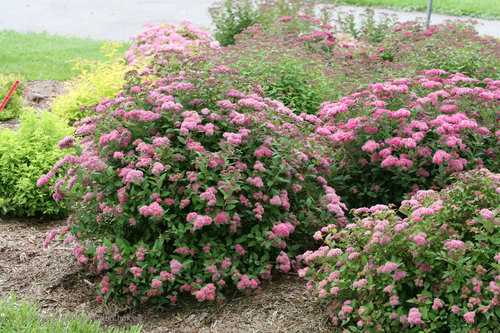
Pruning spirea is an important maintenance task that helps to promote healthy growth and maintain the desired shape of the plants. By following proper pruning techniques and timing, you can ensure that your spirea remains vibrant and beautiful year after year.
Why prune spirea?
Pruning spirea serves several purposes. It helps to remove dead or damaged branches, encourage new growth, and maintain the overall shape and size of the plant. Pruning also allows more sunlight and air circulation to reach the center of the spirea, which helps to prevent disease and pests.
Timing for pruning spirea
The timing for pruning spirea depends on the specific species or variety you have in your garden. In general, spirea should be pruned in late winter or early spring, before new growth starts to appear. This allows the plant to recover quickly and promotes vigorous growth during the growing season.
Some spirea species, such as Spiraea japonica, can also benefit from a light pruning in late summer or early fall. This helps to control the size and shape of the plant and encourages a second flush of flowers.
Pruning techniques
When pruning spirea, it’s important to use the correct techniques to avoid damaging the plant. Here are some key pruning techniques to keep in mind:
- Remove dead or damaged branches: Start by removing any dead or damaged branches. Use sharp, clean pruning shears to make a clean cut just above a healthy bud or branch.
- Thin out crowded branches: If the spirea is overcrowded, thin out the branches by selectively removing some of them. This allows more sunlight and air circulation to reach the inner branches and encourages new growth.
- Shape the plant: To maintain the desired shape and size of the spirea, selectively prune branches to promote a balanced form. This can be done by removing longer, overgrown branches or by cutting back the entire plant to a lower height.
- Prune after flowering: If your spirea produces flowers, wait until after the flowering period to prune. This allows the plant to fully bloom and enjoy its flowers before being pruned.
Conclusion
Pruning spirea is an essential task to maintain the health, shape, and size of the plants. By understanding the proper timing and techniques for pruning, you can keep your spirea looking vibrant and beautiful year after year. Remember to always use sharp, clean pruning shears and make precise cuts just above healthy buds or branches. Happy pruning!
Common Pests and Diseases of Spirea

Spirea is generally a hardy and disease-resistant plant, but like any other plant, it can still be affected by pests and diseases. Here are some common pests and diseases that can affect spirea:
Pests
- Aphids: These tiny insects feed on the sap of spirea plants, which can cause yellowing of leaves and stunted growth. Infestations can usually be controlled by using insecticidal soap or neem oil.
- Spider Mites: These tiny pests often appear as tiny red dots on the underside of leaves. They suck the sap from the plant, causing yellowing and webbing. Spider mites can be controlled by spraying the plant with water or using insecticidal soap.
- Japanese Beetles: These beetles are known to feed on the leaves of spirea plants, causing skeletonized foliage. Handpicking or using insecticidal sprays can help control these beetles.
Diseases

- Powdery Mildew: This fungal disease appears as a white powdery substance on the leaves of spirea plants. It can cause leaves to curl and become distorted. To prevent powdery mildew, ensure good air circulation around the plants and avoid overhead watering.
- Leaf Spot: Leaf spot is a common fungal disease that causes dark spots to appear on the leaves of spirea plants. To control leaf spot, remove and destroy affected leaves and ensure good air circulation.
- Canker: Canker is a fungal disease that causes sunken, discolored areas on the stems of spirea plants. Infected branches should be pruned and destroyed to prevent the spread of the disease.
Prevention and Treatment
To prevent and treat pests and diseases, it is important to maintain good cultural practices. This includes providing adequate sunlight, watering the plants at the base to avoid wet foliage, and regularly inspecting the plants for any signs of pests or diseases.
If a spirea plant becomes infested or infected, prompt action should be taken to prevent the problem from spreading. This may involve using organic or chemical pesticides, pruning infected branches, or applying fungicides as recommended.
It is always best to consult with a local gardening expert or extension office for specific recommendations on pest and disease control for spirea plants in your area.
Landscaping Ideas with Spirea
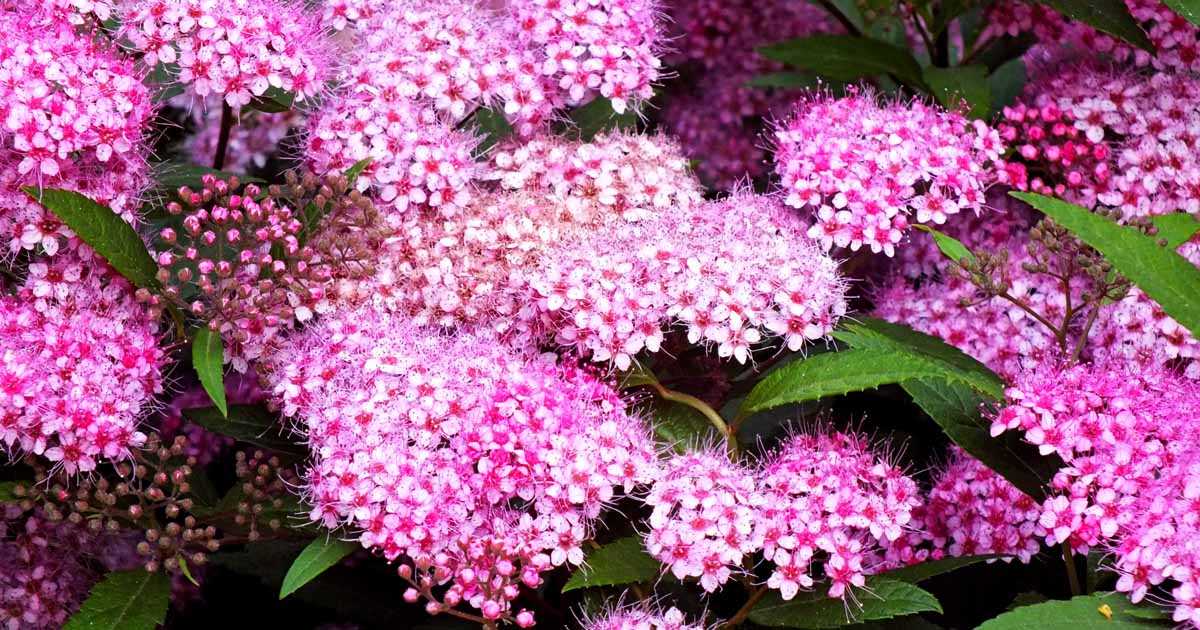
Spirea is a versatile and attractive shrub that can add beauty to any garden or landscape. Here are some landscaping ideas to incorporate spirea into your outdoor space:
1. Mixed Border
Plant spirea along with other flowering shrubs and perennials to create a vibrant and colorful mixed border. Choose spirea varieties with different blooming times to ensure that your border has continuous floral interest throughout the growing season. Some good companions for spirea include roses, daylilies, and lavender.
2. Hedge
Use spirea to create a hedge or privacy screen in your garden. Plant several spirea shrubs close together in a row, and prune them regularly to maintain the desired height and shape. The dense foliage and attractive blooms of spirea will provide a beautiful backdrop for your garden.
3. Mass Planting
Create a dramatic effect by mass planting spirea in a specific area of your garden. This can be done in a single color for a bold statement, or you can mix different spirea varieties for a more eclectic look. Consider planting them in a curved pattern or in clusters to add visual interest.
4. Foundation Planting
Spirea can be used as a foundation planting around the base of your house or other structures. Choose dwarf varieties that remain compact and won’t overwhelm the foundation. This will soften the lines of the building and add a touch of beauty to your home.
5. Erosion Control
If you have a sloping area in your garden that is prone to erosion, spirea can be a great solution. Plant them along the slope to help stabilize the soil and prevent erosion. The extensive root system of spirea will hold the soil in place and the dense foliage will provide additional erosion control.
6. Butterfly Garden
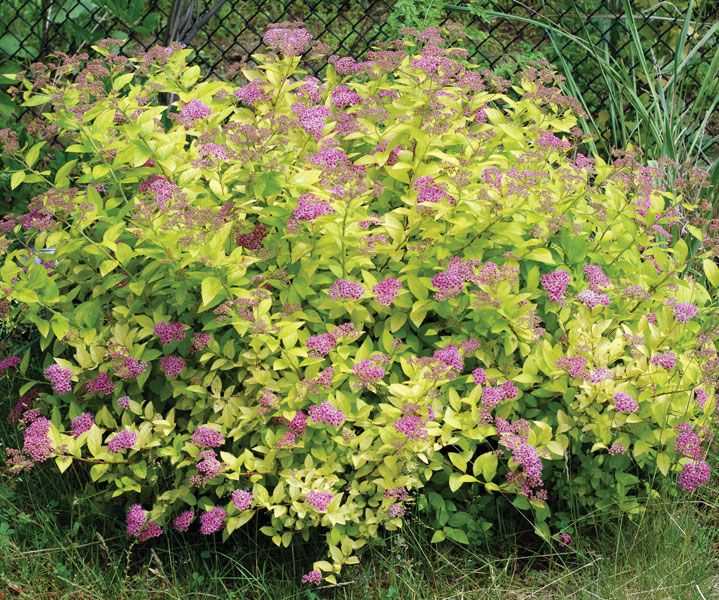
Spirea is a favorite nectar source for butterflies, making it a perfect addition to a butterfly garden. Plant spirea near other butterfly-attracting plants such as milkweed, lantana, and coneflowers. The vibrant blooms of spirea will not only attract butterflies but also add color and beauty to your garden.
These are just a few landscaping ideas to get you started with incorporating spirea into your garden. With its beautiful flowers, lush foliage, and easy care requirements, spirea is a fantastic addition to any landscape.
Popular Spirea Varieties for Your Garden
Spirea is a versatile and beautiful shrub that can be a great addition to any garden. There are many different varieties of spirea available, each with its own unique characteristics. Here are some popular spirea varieties that you might consider for your garden:
- Goldflame Spirea: This variety is known for its stunning foliage, which starts off bright orange in spring, matures to yellow-green in summer, and turns a vibrant coppery-red in fall.
- Little Princess Spirea: A compact and low-growing variety, Little Princess spirea is perfect for smaller gardens or border plantings. It produces clusters of pink flowers that attract butterflies and bees.
- Snowmound Spirea: With its large, pure white flowers in spring, Snowmound spirea makes a beautiful focal point in any garden. It has a mounded shape and can grow up to 4 feet tall.
- Neon Flash Spirea: As its name suggests, Neon Flash spirea is known for its bright pink flowers that bloom throughout the summer. It also has attractive reddish-purple foliage.
- Anthony Waterer Spirea: This spirea variety is prized for its vibrant, deep pink flowers that appear in summer. It has a compact growth habit and can be easily maintained with regular pruning.
- Golden Elf Spirea: A dwarf variety, Golden Elf spirea features golden-yellow foliage that is especially vibrant in the spring. It produces small clusters of pink flowers in summer.
- Magic Carpet Spirea: This variety is known for its colorful foliage, which emerges red in spring, transitions to yellow-green in summer, and turns burgundy in fall. It also produces pink flowers in summer.
If you’re considering adding spirea to your garden, one or more of these popular varieties could be the perfect choice for you. Whether you’re looking for vibrant flowers, striking foliage, or compact growth, there’s a spirea variety to suit your needs. Take some time to research and choose the one that best complements your garden’s style and aesthetic.
Questions and Answers:
What is spirea?
Spirea is a genus of flowering shrubs that belongs to the Rosaceae family. It is known for its beautiful clusters of small flowers and its ability to attract butterflies and bees to the garden.
How do I grow spirea in my garden?
To grow spirea in your garden, choose a location with full sun or light shade. Make sure the soil is well-draining and amend it with compost if needed. Dig a hole that is twice as wide and deep as the root ball of the spirea plant. Place the plant in the hole and backfill with soil, firming it gently around the roots. Water regularly, especially during dry periods, and prune as needed to maintain shape and promote healthy growth.
What are some popular species of spirea?
Some popular species of spirea include Spiraea japonica, Spiraea vanhouttei, and Spiraea x bumalda. These species are known for their beautiful flowers and their ability to thrive in various growing conditions.
Can spirea be used as a hedge?
Yes, spirea can be used as a hedge. It is a versatile plant that can be pruned into a compact shape, making it suitable for hedging purposes. However, it is important to choose a spirea variety that is known for its dense growth habit, such as Spiraea japonica ‘Goldflame’ or Spiraea x vanhouttei, for the best results.
What are some popular varieties of spirea?
Some popular varieties of spirea include Spiraea japonica ‘Goldflame’, which has golden foliage and pink flowers, Spiraea japonica ‘Little Princess’, a dwarf variety with bright pink flowers, and Spiraea x vanhouttei ‘Renaissance’, which has creamy white flowers and a compact growth habit.
Are there any special care requirements for spirea?
While spirea is a relatively low-maintenance plant, there are a few care requirements to keep in mind. It is important to water spirea regularly, especially during dry periods, to help it establish and thrive. Additionally, pruning spirea in late winter or early spring can help promote healthy growth and maintain its shape. Finally, applying a layer of mulch around the base of the plant can help conserve moisture and suppress weed growth.
Can spirea be grown in containers?
Yes, spirea can be grown in containers. It is important to choose a container that is large enough to accommodate the plant’s root system and use well-draining soil to prevent waterlogged conditions. Regular watering and fertilization are also important for spirea grown in containers to ensure healthy growth. However, it is worth noting that some spirea varieties may outgrow containers over time and will need to be transplanted into the ground.







